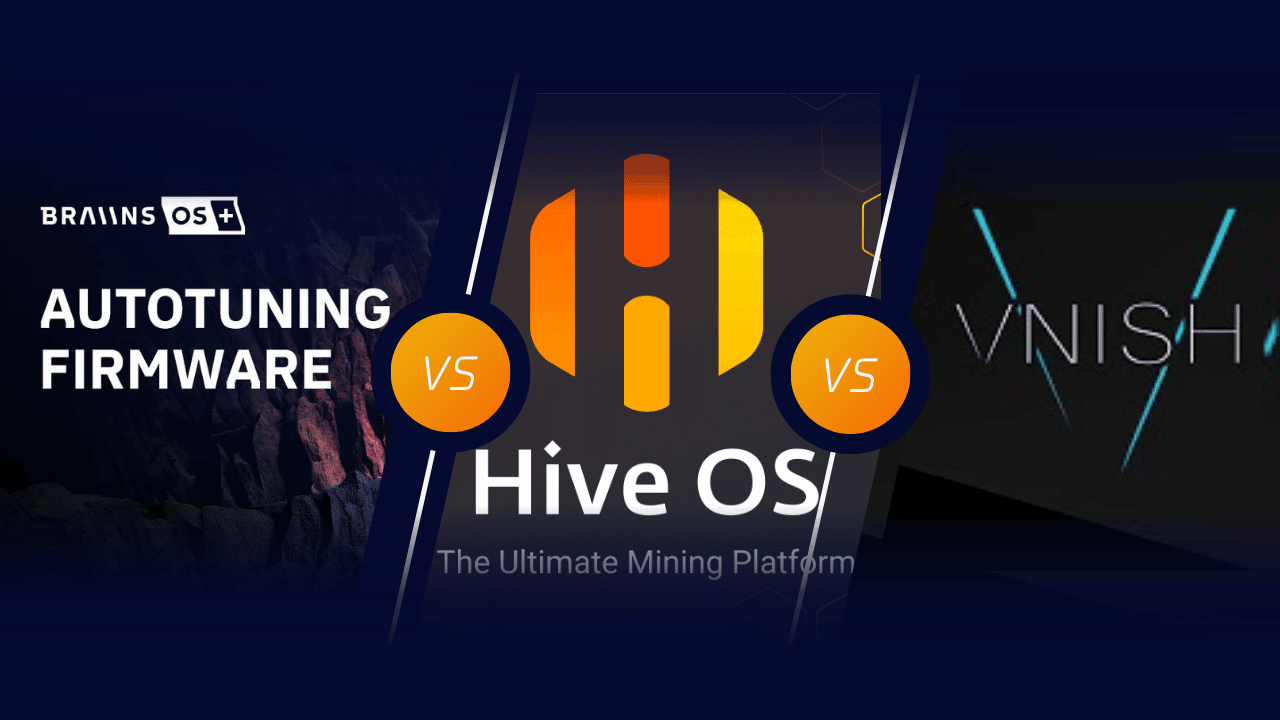
Why Investing in Quality Soldering Station & Tools is Essential for ASIC Repairs
In the rapidly evolving world of cryptocurrency mining, Application-Specific Integrated Circuit (ASIC) miners have emerged as the backbone of the
4479 Desserte Nord Autoroute 440, Laval, QC H7P 6E2

ASIC mining is complex and ever-changing, with technology constantly evolving to meet the demands of a competitive industry. One of the critical components that often goes unnoticed but plays a vital role in the success of mining operations is custom firmware. In this introduction, we will explore the definition of custom firmware, its importance in optimizing profitability and efficiency, and provide an overview of overclocking vs. underclocking. We’ll also delve into the fascinating evolution of firmware in the mining industry.
Custom firmware refers to specialized software embedded within the ASIC (Application-Specific Integrated Circuit) mining hardware. Unlike standard or stock firmware provided by manufacturers, custom firmware is tailored to specific needs, allowing miners to have greater control over their mining operations. It enables functionalities such as overclocking, underclocking, auto-tuning, and more, which can significantly impact the performance of mining equipment.
Firmware acts as the brain of the mining hardware, controlling how it operates and interacts with the network. Custom firmware offers the following advantages:
| Method | Hashrate Impact | Power Consumption | Lifespan Impact |
|---|---|---|---|
| Overclocking | Increase | Increase | Decrease |
| Underclocking | Decrease | Decrease | Increase |
The journey of firmware in mining began with the launch of open-source solutions like CGminer in 2011. Over time, manufacturers started developing proprietary firmware, leading to a new era of customized solutions. The rise of companies like VNish, HiveON, and Braiins has brought innovative features and greater control to miners. The continuous evolution reflects the industry’s dynamic nature and the relentless pursuit of efficiency and profitability.
The history of firmware in the context of ASIC mining is a fascinating tale of innovation, adaptation, and evolution. From the early days of open-source solutions to the current era of specialized, manufacturer-specific firmware, the journey reflects the dynamic nature of the mining industry. In this section, we will explore the key milestones, transitions, and trends that have shaped the landscape of firmware in mining.
In 2011, a significant breakthrough came with the launch of CGminer, an open-source ASIC miner software. Created by Con Kolivas (CK), CGminer quickly became the industry standard, providing miners with a flexible and customizable solution. It allowed miners to control various aspects of their hardware, such as fan speed, clocking, and monitoring, fostering a new era of mining efficiency.
As the mining industry grew, ASIC manufacturers began to see the potential in developing proprietary firmware tailored to their hardware. This shift marked a departure from the open-source ethos, leading to firmware that was optimized for specific devices. While this brought performance improvements, it also limited the customization options available to miners, creating a trade-off between efficiency and flexibility.
The firmware landscape continues to evolve, reflecting the ever-changing demands of the mining industry. Some current trends and developments include:
The history of firmware in ASIC mining is a testament to the industry’s relentless pursuit of excellence and innovation. From the pioneering efforts of CGminer to the sophisticated solutions offered by VNish, HiveON, and Braiins, firmware has continually adapted to meet the needs of miners. As the industry marches forward, custom firmware will undoubtedly continue to play a vital role in shaping the future of mining, offering new ways to optimize performance, security, and profitability.
The quest for efficiency, profitability, and control is never-ending. Custom mining firmware has emerged as a vital tool in this quest, offering a range of benefits that go beyond what stock firmware can provide. In this section, we will explore the reasons behind the growing popularity of custom mining firmware, examining the impact of Bitcoin’s growth, the importance of efficiency in large-scale operations, the limitations of stock firmware, and the multifaceted benefits of custom solutions.
Bitcoin’s meteoric rise has not only revolutionized the financial world but also transformed the mining landscape. As the value of Bitcoin has soared, so has the competition among miners. This intense competition has driven the need for optimization at every level, from hardware to software. Custom firmware has become a critical component in this optimization, enabling miners to fine-tune their operations to maximize returns.
In large-scale mining operations, efficiency is paramount. Even small improvements in power consumption, hashrate, or uptime can translate into significant financial gains. Custom firmware offers the ability to:
While stock firmware provided by manufacturers is designed to work well with specific hardware, it often comes with limitations:
Custom firmware addresses the limitations of stock firmware and offers a host of benefits:
The use of custom mining firmware is not merely a technical choice; it’s a strategic decision that can significantly impact the success of mining operations. As Bitcoin continues to grow and the mining landscape becomes increasingly competitive, the ability to optimize, adapt, and control becomes vital. Custom firmware offers a pathway to these capabilities, unlocking potential efficiencies, enhancing control, and providing the adaptability needed to thrive in a rapidly changing environment.
the terms “underclocking” and “overclocking” are often thrown around, but understanding when and how to use these techniques can be a complex decision. Both underclocking and overclocking have their unique benefits and drawbacks, and choosing between them depends on various factors such as electricity costs, hardware specifications, and mining goals. In this section, we will delve into the definitions, comparisons, scenarios, impacts, and specific examples related to underclocking and overclocking.
| Technique | Goal | Power Consumption | Hashrate | Lifespan Impact |
|---|---|---|---|---|
| Underclocking | Efficiency, Longevity | Decreased | Lower | Potentially Extended |
| Overclocking | Performance | Increased | Higher | Potentially Reduced |
The Antminer S17 provides a practical example of how underclocking and overclocking can be applied:
The decision to underclock or overclock an ASIC miner is multifaceted and must be made with careful consideration of various factors. Understanding the specific scenarios, goals, and hardware can guide this decision, leading to optimized profitability and performance.
The Antminer S17 and other models offer opportunities to experiment with these techniques, but caution and expertise are required to navigate the potential risks and rewards. Consulting with professionals or utilizing custom firmware with built-in safety features can be valuable steps in exploring underclocking and overclocking.
Whether seeking to push the boundaries of performance or to craft a finely-tuned, efficient mining operation, the timing and application of underclocking and overclocking remain central to the art and science of ASIC mining.
Custom firmware allows miners to adjust the clock speed of their ASIC miners, either above or below factory settings. This flexibility enables miners to tailor performance to specific needs, such as maximizing hashrate or improving efficiency and longevity.
With built-in wattmeter functions, custom firmware provides real-time monitoring of power consumption. This feature enables precise tracking and control of energy usage, essential for optimizing costs and efficiency.
Auto-tuning automatically adjusts frequencies to achieve optimal performance. This simplifies the tuning process, leading to considerable gains in efficiency without the need for manual intervention.
Custom firmware often includes a tool that automatically scans for known variants of current viruses. This enhances security by detecting and neutralizing threats, protecting the integrity of the mining operation.
Features that increase hashboard stability and overall performance are common in custom firmware. These enhancements reduce downtime and ensure consistent operation, contributing to higher productivity and profitability.
The ability to disable fans and utilize immersion cooling techniques can prolong the life of ASIC components and lead to more efficient cooling. This feature enhances both performance and sustainability.
Custom firmware allows miners to broadcast configuration files to multiple miners on the same network without rebooting. This streamlines the deployment process, saving time and effort, especially in large-scale operations.
Miners can lower the default overheating protection to a more desirable setting with custom firmware. This extends machine life by providing more conservative thermal protection, preventing potential damage due to overheating.
Custom firmware in ASIC mining offers a suite of features that provide unparalleled control, efficiency, security, and adaptability. From power monitoring to stability enhancements, these features are designed to meet the diverse and dynamic needs of modern miners.
The custom firmware market for ASIC mining is rich with options, each offering unique features and benefits tailored to various mining needs. Here’s an overview of some of the leading products:
VNish is a well-known name in the custom firmware space, offering a wide array of features and benefits.
Hiveon ASIC Firmware is designed to enhance the overall mining experience with a focus on efficiency and security.
Braiins OS stands out for its cutting-edge features and integration with advanced mining protocols.
The custom firmware market offers a variety of products, each with unique features and benefits tailored to different mining needs. From VNish’s robust community support to Hiveon’s focus on efficiency and Braiins OS’s cutting-edge technology, miners have a wealth of options to choose from.
The world of ASIC mining is ever-evolving, and custom firmware stands at the forefront of this dynamic landscape. Its importance cannot be overstated, as it plays a pivotal role in enhancing mining efficiency, profitability, and adaptability.
Custom firmware offers miners the ability to tailor their mining operations to specific needs and goals. From overclocking for maximum hashrate to underclocking for energy efficiency, the control and flexibility provided by custom firmware are unparalleled.
Firmware is more than just a tool; it’s a strategic asset that can transform mining operations. By optimizing performance, reducing costs, and enhancing security, custom firmware contributes to a more successful and sustainable mining venture.
At D-Central, we understand the complexities and opportunities of the mining industry. Our array of services, including consultation, sourcing of mining hardware, hosting mining operations, ASIC repairs, and comprehensive support, are designed to meet your unique needs.
Whether you’re looking to optimize an existing operation or embark on a new mining venture, our team of experts is here to guide you every step of the way.
What is custom firmware in ASIC mining?
Custom firmware is specialized software embedded in the ASIC mining hardware that is specifically tailored to particular needs, providing miners with improved control over their operations. It allows for features such as overclocking, underclocking, auto-tuning, and more, all of which can significantly enhance the performance of mining equipment.
What is the importance of firmware in optimizing profitability and efficiency?
Firmware is crucial in mining as it controls how the mining hardware operates and interacts with the network. Custom firmware can enhance efficiency, maximize profit, extend equipment longevity, and allow adaptability to changing conditions in the mining industry.
What are overclocking and underclocking?
Overclocking refers to the practice of increasing the operating speed of the ASIC miner’s components, which can lead to higher profits but also increases power consumption and risk of hardware failure. On the other hand, underclocking is reducing the operating speed to decrease power consumption and heat generation, potentially increasing profitability per watt and extending the hardware’s lifespan.
How has firmware evolved in the mining industry?
The journey of firmware in mining started with the launch of open-source solutions, and over time, manufacturers began developing proprietary firmware. Today, companies like VNish, HiveON, and Braiins have brought innovative features and improved quality of offerings, reflecting the industry’s demands and evolution.
What advantages does custom firmware offer over stock firmware?
Custom firmware allows for greater control, enhanced efficiency, adaptability to different mining scenarios, and improved security and stability for miners. It addresses the limitations of stock firmware, such as lack of customization, potential inefficiencies, and limited features.
What should be considered when choosing between overclocking and underclocking?
Factors such as electricity costs, hardware specifications, and mining goals should be considered when choosing between overclocking and underclocking. For instance, high electricity costs might prefer underclocking while low costs might allow for overclocking.
What are some of the useful features provided by custom firmware?
Some useful features provided by custom firmware include overclocking and underclocking options, power monitoring, auto-tuning, ASIC virus scanning, stability enhancements, fan disabling or immersion cooling, full deployment capabilities, and lower thermal threshold.
What are some of the products available in the custom firmware market?
Products for custom firmware include VNish, which provides auto-tuning, quick startup, and virus scanning features; Hiveon ASIC Firmware, emphasizing improved efficiency and security with virus protection and energy-saving features; and Braiins OS, known for its integration with advanced mining protocols and automatic tuning.
What services does D-Central offer?
D-Central offers various services tailored to the needs of miners, including consulting, sourcing of mining hardware, hosting mining operations, ASIC repairs, maintenance training, and comprehensive mining support and outsourcing solutions.
DISCLAIMER: D-Central Technologies and its associated content, including this blog, do not serve as financial advisors or official investment advisors. The insights and opinions shared here or by any guests featured in our content are provided purely for informational and educational purposes. Such communications should not be interpreted as financial, investment, legal, tax, or any form of specific advice. We are committed to advancing the knowledge and understanding of Bitcoin and its potential impact on society. However, we urge our community to proceed with caution and informed judgment in all related endeavors.
Related Posts

In the rapidly evolving world of cryptocurrency mining, Application-Specific Integrated Circuit (ASIC) miners have emerged as the backbone of the

In the dynamic world of Bitcoin mining, a pivotal shift is underway, reshaping how miners approach the complex task of

The rapid growth of Bitcoin and other cryptocurrencies has led to an ever-increasing demand for efficient and sustainable mining techniques.